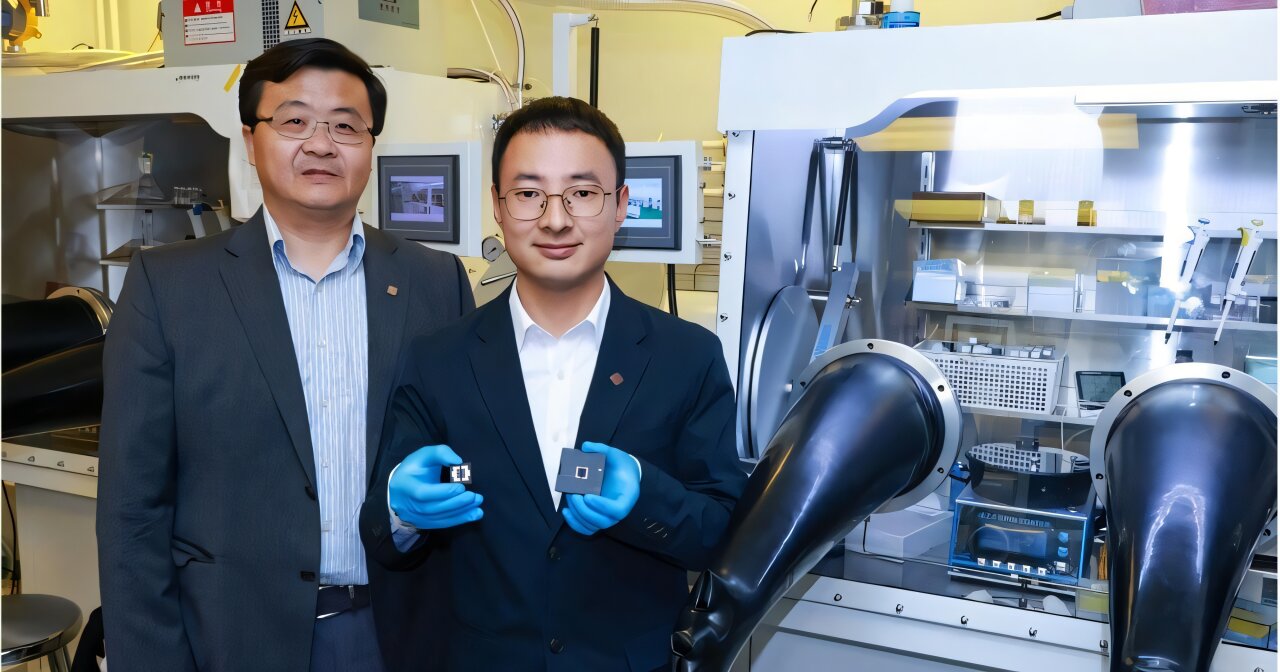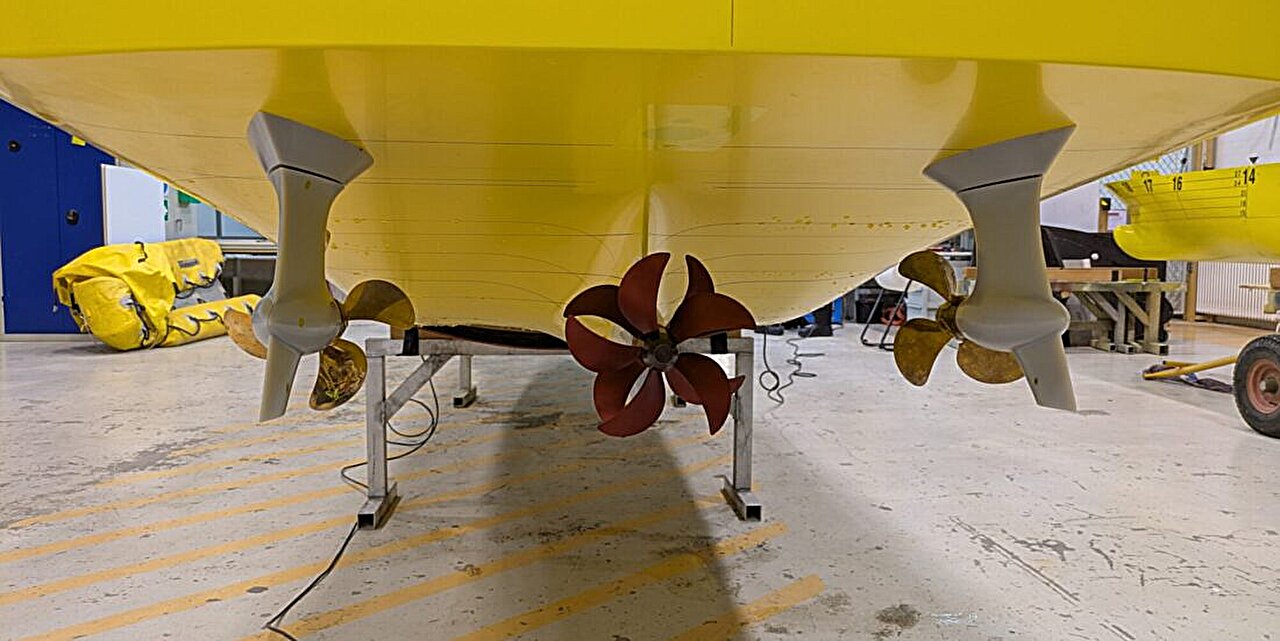Tech
Ericsson, Nokia join VodafoneThree £11bn network build out | Computer Weekly

As part of its overal £11bn investment plan to build “the UK’s best network”, VodafoneThree has appointed Ericsson and Nokia as key partners in the delivery of 5G mobile infrastructure, signing contracts worth more than £2bn.
Three months into operation as a fully merged company, VodafoneThree operates as a multi-brand mobile strategy in the consumer market, with Vodafone, Three, VOXI, Smarty and Talkmobile remaining. Vodafone has a single brand for business customers, offering one team able to tailor systems to a customer’s needs, with the ambition to become the UK’s biggest converged network for business.
VodafoneThree claims to be the only UK operator with a quarter-by-quarter, year-by-year plan to reach 99.95% 5G standalone (5G SA) population coverage by 2034. The 5G SA network build-out plan is front-loaded so that it will hit 90% population coverage from a current baseline of 47% by the end of the third year, and up to 50 million people will have access to its fastest 5G speeds in just one year.
Through the use of the company’s multi-operator core network (MOCN) technology, VodafoneThree said that customers’ devices will automatically connect to the best coverage available, effectively giving them access to two networks at no extra cost. The operator believes this will see customers of both brands experience improved coverage, reliability and speed when using 4G and 5G networks.
The deals with Ericsson and Nokia will span an eight-year period and will see the installation of “the latest technology and R&D” to deliver 5G technology over the course of the forthcoming decade. Nokia and Ericsson will make up the majority of VodafoneThree’s network build which will culminate in a greater number of sites.
The agreement will see Ericsson will deploy its next-generation radio access network (RAN) and core network technology across the UK. In addition to modernising existing 4G and 5G infrastructure, the deployment of Ericsson RAN over 10,000 sites in the UK will look to underpin VodafoneThree’s population-wide rollout of 5G SA connectivity by 2034.
For its part, Nokia will supply equipment from its RAN portfolio to approximately 7,000 sites across the UK. Nokia will also modernise part of VodafoneThree’s voice core to deliver the operator’s premium connectivity to it customers nationwide with improved speeds, coverage, capacity and a smooth transition to 5G Standalone networks.
Four British based site-build partners with extensive experience – Beacon Communication Services Limited, Circet Wireless Limited, M Group Limited and WHP Telecoms Limited – will accompany the technology partners, delivering vital work to enable the build across the UK.
Commenting on the deployments, Max Taylor, CEO, VodafoneThree, said: “We said we would deliver at pace and, just a few months in, we are delighted to announce our strategic partners, Ericsson and Nokia, that will work with us to deliver our ambition of building the UK’s best network. They bring the scale and expertise needed to accelerate the delivery of a resilient, secure, world-class and future-ready network, and together, we are laying the foundations for the UK’s digital future.”
Ericsson president and CEO Börje Ekholm said: “We are proud to partner with VodafoneThree as their primary vendor to power them with the most advanced programmable network products, software and solutions in the world. Trusted high-performing programmable networks are critical to success for the UK’s digital economy. AI, automation and virtual/augmented reality won’t reach their potential without them.”
Nokia president and CEO Justin Hotard added: “Today’s networks need new levels of performance, trust and resilience. We are pleased that VodafoneThree has chosen our industry-leading network solutions to build a future-proof 5G Standalone network across the UK to meet the needs of customers today and as the AI super-cycle accelerates.”
Tech
Research drives commercialization of energy-efficient solar cell technology toward 40% efficiency milestone

Third-generation solar cell technology is advancing rapidly. An engineering research team at The Hong Kong Polytechnic University (PolyU) has achieved a breakthrough in the field of perovskite/silicon tandem solar cells (TSCs), focusing on addressing challenges that include improving efficiency, stability and scalability.
The team has conducted a comprehensive analysis of TSC performance and provided strategic recommendations, which aim to raise the energy conversion efficiency of this new type of solar cell from the current maximum of approximately 34% to about 40%.
The team hopes to accelerate the commercialization of perovskite/silicon TSCs through industry-academia-research collaboration, while aligning with the nation’s strategic plan of carbon peaking and neutrality and promoting the development of innovative technologies such as artificial intelligence through renewable energy.
The research team comprises leading scholars including Prof. Li Gang, Chair Professor of Energy Conversion Technology and Sir Sze-yuen Chung Endowed Professor in Renewable Energy, and Prof. Yang Guang, Assistant Professor, both of the PolyU Department of Electrical and Electronic Engineering.
They conducted a critical review of the challenges and future prospects of perovskite/silicon TSCs titled “Towards efficient, scalable and stable perovskite/silicon tandem solar cells,” which has been published in the journal Nature Photonics.
Tackling stability and manufacturing challenges
“While lab-scale devices have shown impressive efficiency advancement, further efforts are needed to improve their reliability, including minimizing efficiency losses from small-area devices to large-area modules,” said Prof. Gang. “Special focus should also be given to ensuring that the manufacturability of materials and methods aligns with industrial standards.”
To address these issues, Prof. Guang and the team highlighted several critical technical challenges. First, the intrinsic instability of perovskite materials under environmental stresses such as moisture, oxygen, ultraviolet light and thermal fluctuations remains a major challenge. Second, translating tandem devices to commercial-scale modules requires overcoming hurdles related to uniformity, defect control and large-area fabrication.
Although preliminary outdoor testing of perovskite/silicon TSCs has been conducted, certified data on their long-term reliability remain scarce. To better assess the actual lifetime and commercial potential of these cells, the researchers recommend rigorous accelerated stability testing based on standardized procedures outlined by the International Electrotechnical Commission.
Additionally, while perovskite raw materials are relatively low-cost, the use of rare elements and heavy metal lead in most cell designs raises significant environmental and regulatory concerns. The research therefore advocates for the development of sustainable alternatives, along with efficient recycling or lead sequestration strategies to enable viable commercialization.
Promoting industry-academia-research collaboration
The PolyU team advocates for industry-academia-research collaboration through a multidisciplinary approach that integrates material science, device engineering and economic modeling to advance this promising photovoltaic technology. “The development of efficient and reliable perovskite/silicon TSCs must address these remaining scientific challenges to achieve lower levelized electricity costs,” said Prof. Guang.
“The team hopes this research will facilitate the transition of the technology from laboratory studies to commercial fabrication, while closely aligning with the nation’s strategic plan of carbon peaking and neutrality. By providing a stable supply of high-efficiency renewable energy, we aim to deliver green and reliable power support for high-energy-consuming industries such as artificial intelligence, thereby helping to achieve a low-carbon transformation of the energy structure.”
More information:
Guang Yang et al, Towards efficient, scalable and stable perovskite/silicon tandem solar cells, Nature Photonics (2025). DOI: 10.1038/s41566-025-01732-y
Citation:
Research drives commercialization of energy-efficient solar cell technology toward 40% efficiency milestone (2025, November 10)
retrieved 10 November 2025
from https://techxplore.com/news/2025-11-commercialization-energy-efficient-solar-cell.html
This document is subject to copyright. Apart from any fair dealing for the purpose of private study or research, no
part may be reproduced without the written permission. The content is provided for information purposes only.
Tech
This is how two contra-rotating propellers can make ships more energy efficient

By using two propellers that rotate in opposite directions, a ship can use less energy to move forward. New knowledge means that more ships can use the technology, including Hurtigruten’s Sea Zero project for its coastal cruise ships.
SINTEF has now designed and manufactured new measuring equipment for model testing of contra-rotating propellers. This could be good news for many large ships.
“We see that propulsion efficiency increases when we utilize some of the energy lost from the front propeller at the same time as the rear propeller gets better water flow. This can provide more than 10% better efficiency compared to conventional propellers,” says Øyvind Rabliås, a researcher at SINTEF.
Although contra-rotating propellers are not new, they are still rarely used on commercial ships. The reason has been their cost and more complicated design than traditional layouts. That may be changing now.
“Together with our research partners, we’ve spent a lot of time on understanding and developing solutions for this. Now we believe that the technology is mature and ready for wider use,” says Jahn Terje Johannessen. He is a senior hydrodynamicist at Brunvoll, a leading provider of propulsion and maneuvering systems.
Good test results
SINTEF’s new measurement system was developed when Hurtigruten decided to use contra-rotating propellers for its zero-emission cruise ship in the Sea Zero project. The goal is an emission-free Hurtigruten ship with a sustainable and circular solution by 2030.
Contra-rotating propellers have significantly better efficiency than today’s propeller systems.
“This design simply means that we need less energy to achieve the same speed compared to conventional propellers. Brunvoll’s design is also more efficient than the contra-rotating propellers that exist today,” says Gerry Larsson-Fedde, chief operating officer at Hurtigruten.
From drawing board to reality
A broad interdisciplinary team at SINTEF Ocean, from technicians and instrumentation engineers to design experts and researchers, has developed the new measuring equipment for model testing contra-rotating propellers. Together, they arrived at a solution that is well suited for self-propulsion tests.
Two dynamometers, which are instruments used to measure force in rotating systems, have also been developed.
“One version is suitable for integrating into ship models that are tested in the Towing Tank, meaning that it is built into the model, and the other version is used in open water tests and in cavitation tests,” says Rabliås.
The system has already tested Brunvoll’s propeller system for Hurtigruten. The results provided valuable insight into the system’s performance and helped identify the most efficient propulsion solution for further development.
“It was an added bonus for Brunvoll that the project is so versatile. We have a lot of different industrially relevant issues in our work to create a demonstrator,” says Johannessen.

Hurtigruten is also very pleased to have its ground-breaking ship tested.
“It’s fantastic for us that we can test all the parts of the Sea Zero design at such a professional and advanced laboratory as SINTEF has. Contra-rotating propellers are new to us, and they are not common on ships either. That’s why it is so important for us to be able to thoroughly test the ship design in the cavitation tunnel. Then we’ll know that it will work in practice,” says Larsson-Fedde.
Some challenges too
Propulsion efficiency is increased by recovering part of the energy loss from the front propeller and by better inflow to the rear propeller. That is why it is possible to achieve more than a 10% increase compared to conventional propellers. However, contra-rotating propellers require a complex shaft-in-shaft system.
“The design process is also more complicated than for conventional propellers, both because of complex flow phenomena and the larger number of parameters that need to be adjusted, compared to one propeller. This applies to both the diameter ratio and the propeller’s revolution ratio between the two propellers, for example,” says Rabliås.
It will be exciting to follow the developments in the future for Hurtigruten as well.
“The goal of Sea Zero is to design the world’s most energy-efficient ship, and in that quest we have to leave no stone unturned. The propulsion itself uses a lot of energy, and so contra-rotating propellers are very exciting for us to look at,” says Larsson-Fedde.
Citation:
This is how two contra-rotating propellers can make ships more energy efficient (2025, November 10)
retrieved 10 November 2025
from https://techxplore.com/news/2025-11-contra-rotating-propellers-ships-energy.html
This document is subject to copyright. Apart from any fair dealing for the purpose of private study or research, no
part may be reproduced without the written permission. The content is provided for information purposes only.
Tech
Sweat-powered sticker turns your drinking cup into a health sensor

A team of engineers at the University of California San Diego has developed an electronic sticker that can monitor a person’s vitamin C levels using the sweat from their fingertips—no blood draws, lab visits or batteries required. The flexible sticker, which attaches to the outside of a drinking cup, collects trace amounts of sweat as a person grips the cup. Within minutes, the system harvests enough power from the sweat to analyze it for vitamin C and wirelessly sends the results to a nearby laptop.
Details about the device are published in Biosensors and Bioelectronics.
“By turning everyday objects like cups or bottles into smart sensors, people can gain real-time insights into their health and wellness without changing a thing about their daily routine,” said study co-senior author Patrick Mercier, a professor in the Department of Electrical and Computer Engineering at the UC San Diego Jacobs School of Engineering.
“We’re moving toward a future of ‘unawareables’—devices that are unobtrusive and essentially invisible so that you are unaware that you’re even using them. You just go about your day and your drinking cup can give you access to all this rich information.”
Malnutrition and micronutrient deficiencies continue to affect millions of people worldwide. While vitamin C plays a key role in immune function, tissue repair and iron absorption, testing for it currently requires blood draws, specialized laboratory equipment and costs around $50 per test in the U.S. These barriers make frequent monitoring impractical for many people.

The new sticker offers a simple, convenient and low-cost alternative. Built on a flexible, adhesive polymer sheet, the system integrates screen-printed electronic components. A porous hydrogel pad mounted on the sticker collects sweat from the fingertips. A built-in biofuel cell converts chemicals in the sweat into electricity, which powers a custom printed circuit board and the vitamin C sensor. The circuit board reads signals from the vitamin C sensor and wirelessly transmits the data via Bluetooth low energy.
“Most people only get a snapshot of their health once a year at the doctor. But our bodies change much more frequently than that,” Mercier said. “We want to make access to health data as frequent and effortless as holding your morning coffee cup or orange juice bottle.”
Another special feature of the sticker is that it generates power without requiring physical exertion from the user. Fingertips, despite their small size, are among the body’s most prolific sweat producers—each is packed with over a thousand sweat glands and can produce between 100 and 1,000 times more sweat than most other areas on the body. This steady trickle of natural perspiration provides a continuous energy source that allows the sticker to operate even when the user is at rest.
Because the system is battery-free, it can be manufactured at low cost—potentially for just a few cents per unit. Its affordability could also make future versions of the system disposable and widely accessible, particularly in low-resource areas.
-

Study co-first author Muhammad Inam Khan, a nano engineering Ph.D. student at the UC San Diego Jacobs School of Engineering, demonstrates fingertip placement on the sticker while gripping a boba drink. Three fingertips rest on the arched biofuel cell (left) while the tip of the middle finger rests on the vitamin C sensor (right). Credit: David Baillot/UC San Diego Jacobs School of Engineering
-

Study co-first author Ryan Burns, an electrical and computer engineering Ph.D. student at the UC San Diego Jacobs School of Engineering, uses the sticker on a cup filled with orange juice. Credit: David Baillot/UC San Diego Jacobs School of Engineering
The work is a collaboration between the labs of Mercier and Joseph Wang, a professor in the Aiiso Yufeng Li Family Department of Chemical and Nano Engineering at the UC San Diego Jacobs School of Engineering. It builds on wearable technologies that Wang’s lab has pioneered—including tattoo-like biochemical sensors and fingertip-power wearables—along with ultra-low power, battery-free wireless systems developed in Mercier’s lab.
In tests, the device was stuck onto a disposable drinking cup and accurately tracked changes in vitamin C levels after participants took a supplement or drank orange juice. The device powered itself for more than two hours using only sweat-derived energy.
“This is an elegant extension of our early fingertip sweat-based technology toward effortless, continuous monitoring of personal nutrition and health,” said Wang, one of the study’s co-senior authors. “By moving sensors from the skin to the surface of everyday objects like cups or bottles, we are expanding what wearable technology can be.”
The team plans to expand the technology to measure additional nutrients and biochemicals. Future versions could send readings directly to smartphones or smartwatches to provide more seamless, real-time tracking of personal health data throughout the day.
Co-authors of the study include Muhammad Inam Khan, Ryan Burns, Akshit Agarwal, Lu Yin, Jongmin Moon, Bumsik Choi, Shichao Ding and Tamoghna Saha, all at UC San Diego.
More information:
Muhammad Inam Khan et al, A smart cup for wireless, biofuel-powered, sweat-based vitamin C sensing, Biosensors and Bioelectronics (2026). DOI: 10.1016/j.bios.2025.118100
Citation:
Sweat-powered sticker turns your drinking cup into a health sensor (2025, November 10)
retrieved 10 November 2025
from https://techxplore.com/news/2025-11-powered-sticker-cup-health-sensor.html
This document is subject to copyright. Apart from any fair dealing for the purpose of private study or research, no
part may be reproduced without the written permission. The content is provided for information purposes only.
-

 Politics1 week ago
Politics1 week agoPolitical violence kills almost 300 since Hasina’s fall: rights group
-

 Sports1 week ago
Sports1 week agoPakistani runners make their mark at Istanbul Marathon
-

 Entertainment1 week ago
Entertainment1 week agoPresident Zardari to attend Second World Summit for Social Development in Doha
-

 Politics1 week ago
Politics1 week agoIran vows to rebuild nuclear sites ‘stronger than before’
-

 Tech1 week ago
Tech1 week agoLive TV Isn’t Dead. These Are the Best Live TV Streaming Services
-

 Entertainment1 week ago
Entertainment1 week agoGeorge Clooney on “Jay Kelly,” fame and family
-

 Sports1 week ago
Sports1 week agoDyche fumes at Man Utd goal, calls for VAR change
-

 Fashion1 week ago
Fashion1 week agoCoach reconnects with Bank & Vogue for upcycled bags using corduroy






